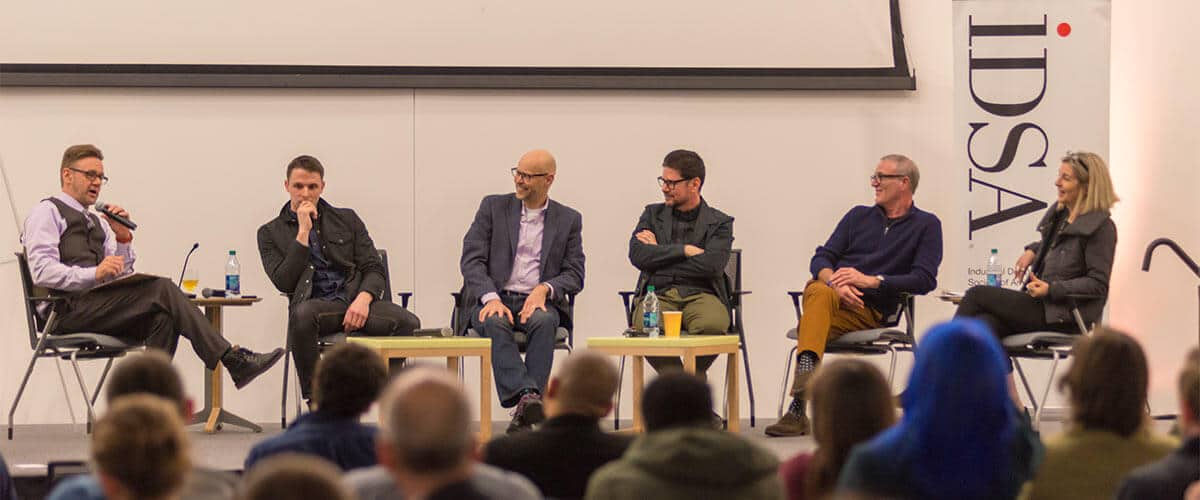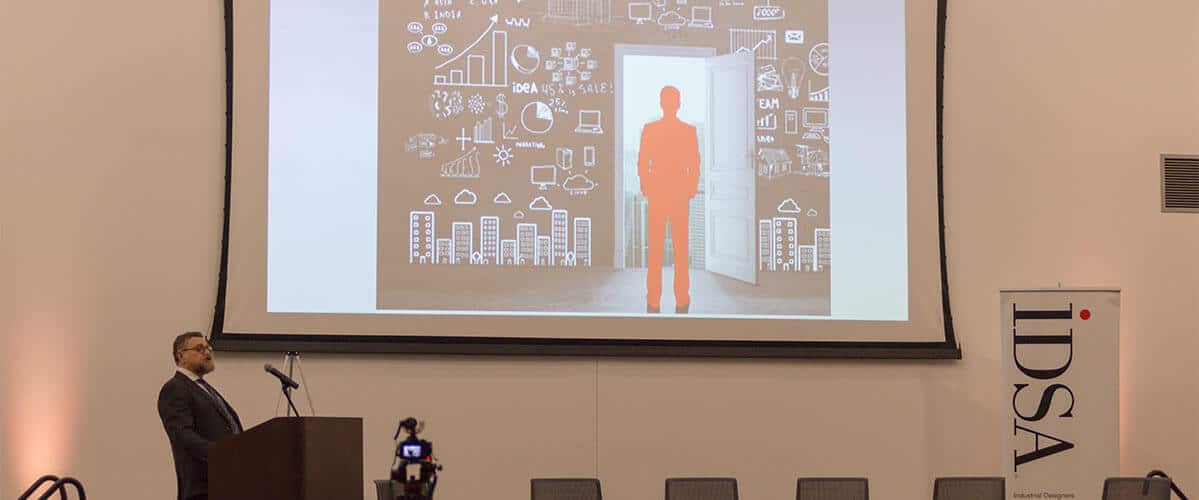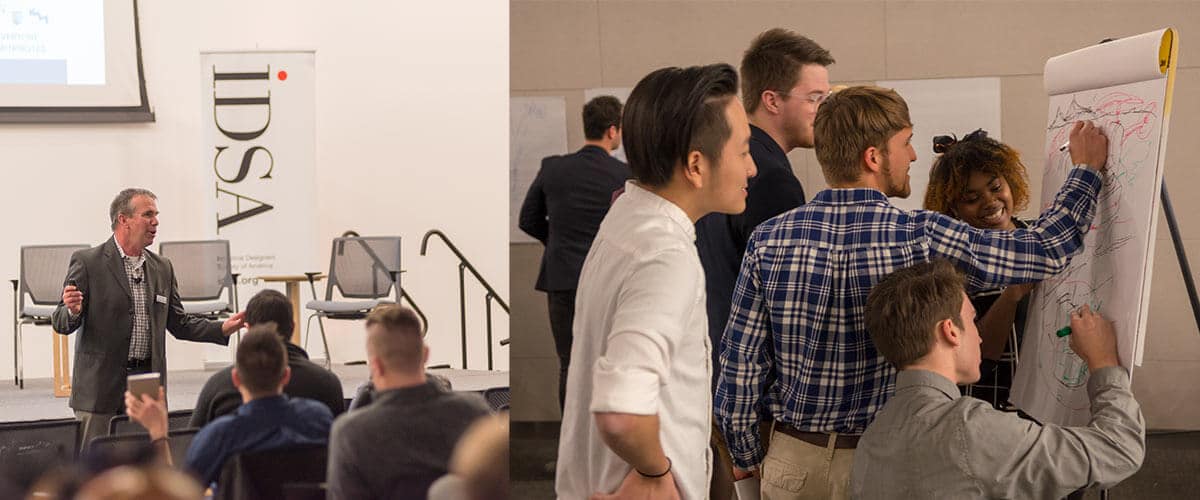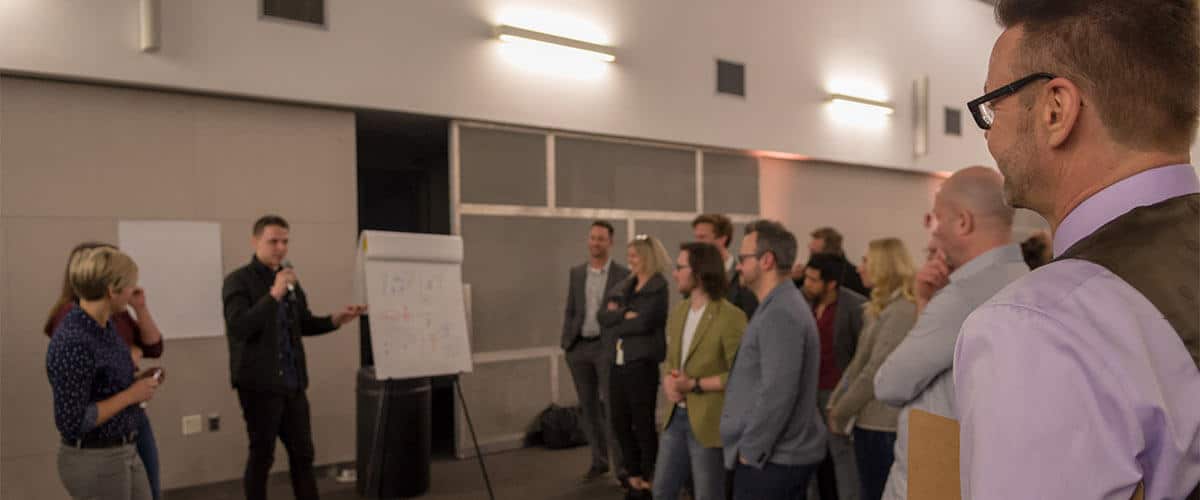
Learning Through Community
This past March, The Michigan Chapter of Industrial Designers Society of America (IDSA-MI) hosted a design consortium with leaders from Ford Motor Company, Whirlpool, Sunberg-Ferar, Kaleidoscope, Newell Brands, Eureka! Ranch, Shinola, and DISHER. The event was held in the College for Creative Studies – Taubman Center and sponsored by Design Core Detroit, the College for Creative Studies, and DISHER. It was a fantastic opportunity for members of Michigan’s design community to get together and hear from a handful of experts about what the future of design and innovation might hold. Attendees had the chance to ask their own questions and network with the speakers and panelists which led to great discussion. If you could not make it to Detroit— no worries. I have compiled a few of my take-aways from the event.

Consortium Panelists, left to right: Todd Kauranen – IDSA MI Vice Chair, Colin Tury – Shinola, Rich Gresens – Newell Brands, Craig Metros – Ford Motor Co., Patrick Schiavone – Whirlpool, and Sally Erickson Wilson – College for Creative Studies.
The past helps predict the future.
The future and futurism were both discussed. It is interesting to note that the futurism movement actually began in Italy in the early 1900s. It emphasized cars, speed, efficiency, and violence. There is a certain amount of irony in the fact that futurism is technically part of the past and yet it is the best way to see forward. Our first two speakers, Giuseppe Delena (VP at Kaleidoscope) and Jeevak Badve (VP at Sunberg-Ferar), discussed the history of the design field in relation to world history. They gave context as to where we are today in the timeline of design evolution and where it may lead. Utilizing the past to understand patterns and trends is one of the best ways to discern the future of the design and innovation landscape— from businesses, products, and experiences to services and the human threads that connect them all.

Giuseppe Delena from Kaleidoscope was a keynote speaker along with Jeevak Badve from Sunberg-Ferar, Maggie Nichols from Eureka! Ranch, and Dayna Beal from DISHER.
The future of industrial design is you!
Much of what the speakers said was particularly challenging and encouraging to the students and young designers in attendance. The question that arose most often was: What happens to the field of industrial design as products become more diverse and complex? Will the industrial designer be able to be a renaissance man (or woman) when new segments of the industrial design field keep surfacing like UX design, UI design, and CFM? The responses from the experts centered around the idea that today’s designers have the insights and the resources to blaze their own path and decide which area of design they want to focus on. In essence, the future is in our hands. Being a constant learner is the best way to stay relevant.
Learn to fail.
The concept of failure came up often. Maggie Nichols (COO at Eureka! Ranch & Innovation Engineering) said that the way to accomplish meaningful innovation is to use systems for faster thinking. Faster thinking comes from faster failure. That means creating environments where it is okay to fail. For example, organizations should create experiences/ prototypes that are low cost with the ability to fail without impacting their business’s profitability. This gives organizations a direct means to get feedback from people on the failures. She also pointed out that it is not just our own failures we need to learn from. Research can show us where others have failed and succeeded, and we need to apply this knowledge. The panelists gave examples from their own careers where they failed in a big way. This resulted in humorous stories about dropped clay models and expensive projects that bombed. On a serious note, the presenters discussed how failures that occurred during the user research phase of development eventually led to great product innovations.
Get out of your bubble.
Dayna Beal (Business Lead at DISHER) led an interactive session which got participants out of their chairs. We actually did some design work and learned the benefits of developing a design culture. Using the concept of failing fast, we went through multiple cycles of drawing on boards. First, we drew individually with mediocre results. Next, as a group, we designed with slightly more interesting results. Lastly, we were given the opportunity to actually plan and collaborate with fellow designers in our group before going to the board to draw some rapid sketches. Because of the high-caliber designers in attendance, this last exercise produced a variety of creative concepts that would not have been generated if not for the community of diverse thinking. Great design occurs through the collision of ideas from multiple sources.

Rather than talk about the importance of designing in a collaborative community, Dayna Beal had the participants form groups and become one.
Written By: Ben Zuiderveen | Industrial Designer
Ben enjoys taking an active role in DISHER’s front-end Discovery team. He’s a graduate of Kendall College of Art and Design with a BA in Industrial Design, and his hero is Henry Dreyfuss who elevated ID to include human factors, ergonomics, and usability. Ben enjoys mountain biking in the summer, cross country skiing in the winter, and woodworking year round. Mike Birbiglia makes him laugh the hardest.
Written By:

Ben Zuiderveen
Industrial Designer
DISHER Newsletter
Sign up to receive articles and insights, delivered monthly.
Schedule a no-committment project call
Reach out to discuss your project to find out if DISHER could be a good fit for you.

